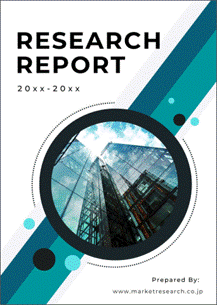 | • レポートコード:MRC2106A277 • 出版社/出版日:Mordor Intelligence / 2021年5月25日 • レポート形態:英文、PDF、120ページ • 納品方法:Eメール(受注後2-3営業日) • 産業分類:その他 |
| Single User | ¥481,000 (USD3,250) | ▷ お問い合わせ |
| Team User | ¥555,000 (USD3,750) | ▷ お問い合わせ |
| Corporate License | ¥962,000 (USD6,500) | ▷ お問い合わせ |
• お支払方法:銀行振込(納品後、ご請求書送付)
レポート概要
| 本調査資料は、インドネシアの小売市場について調査し、イントロダクション、調査手法、エグゼクティブサマリー、市場洞察&動向、製品別分析、流通チャネル別分析、競争状況、市場機会/将来の見通しなどを徹底分析したものです。 |
The retail sector in Indonesia remains one of the most promising markets among Asian countries, on the back of its large population and the growing middle class with higher household purchasing power and increasingly modern spending habits. However, the sudden COVID-19 pandemic has pushed the market into lockdowns which resulted in a drop in revenues of the physical distribution channels. The small and unorganized players incurred several losses of which some result in a temporary halt of the business activities. Though the consumption was largely affected by higher prices for food, electricity, etc., during the initial year of the study period, i.e., during 2018, the retail sector got back to track with the support of lower credit cost, increasing employment, and an expansion of social welfare.
In Indonesia, household consumption has slowed down in the past two years, which is a great concern, as household consumption has been the biggest driving factor for the economy, and is of greater importance than investment, exports, and government spending. Private consumption in the form of household spending has always accounted for more than 50% of the nation’s GDP yet, there has been a slowdown in consumption growth. The retailer’s profit margins were unstable during the study period and were largely affected by the sudden COIVD-19 pandemic. The retail sector is expected to witness a slow recovery rate in the country owing to the people’s purchasing power which remained sluggish due to the pandemic.
Key Market Trends
Online Retailing is Gaining More Traction Yet Physical Retailing is Dominating the Market
Indonesians have started embracing digital technology with enthusiasm and are among the world’s most avid users of social media. Likewise, Indonesia has a growing digital ecosystem featuring online commerce, media distribution, ride-sharing services, financial services, etc., and also the country has the leading number of billion-dollar tech startups in the Southeast Asian region which includes Bukalapak, Tokopedia, Go-Jek, Traveloka, and others. Similarly, the retail sector has started an experienced growth in market share of the online distribution channel during the study period, yet owing to the customer sentiments and beliefs the physical retailing has been dominating the market. Amidst the COVID-19 pandemic, online retailing has become very strong during 2020, which is expected to continue in the forecast period as well owing to the high adoptability rate and convenience it offers.
The Food and Beverage Sector plays a Vital Role in Indonesian Economy
The F&B sector plays a vital role in the Indonesian economy. Indonesia’s position in the global F&B market is uncertain, as on one hand, Indonesia is one of the largest producers of palm oil, fish, cocoa, and coffee, exporting its production surpluses abroad, while on the other hand, Indonesia relies on imports of products that cannot be produced (either at all or insufficient quantity) locally, such as wheat, dairy, or processed food products. Amidst the COVID-19 pandemic, the F&B sector has emerged as one of the more resilient pockets of growth in Indonesia’s economy. Despite the plunge in demand during the annual Ramadan period as a result of the outbreak, the sector was able to record positive year-on-year growth rates of 3.94% and 0.22% for the first and second quarter of 2020 respectively.
Competitive Landscape
The report covers major international players operating in the Indonesian retail market. In terms of market share, few of the major players currently dominate the market. The organized retail market has been growing significantly with companies expanding stores and considering the business potential in new areas. Most of the unorganized retail outlets are increasingly being replaced with big retail hypermarkets, supermarkets, and other retail chains. This is expected to continue on a large scale during the forecast period, which will significantly lead to market growth.
Reasons to Purchase this report:
– The market estimate (ME) sheet in Excel format
– 3 months of analyst support
1 INTRODUCTION
1.1 Study Assumptions and Market Definition
1.2 Scope of the Study
2 RESEARCH METHODOLOGY
3 EXECUTIVE SUMMARY
4 MARKET INSIGHTS AND DYNAMICS
4.1 Market Overview
4.2 Market Drivers
4.3 Market Restraints/Challenges
4.4 Value Chain / Supply Chain Analysis
4.5 Porter’s Five Force Analysis
4.6 Consumer Behavior Analysis
4.7 Insights on Technological Innovations in the Retail Industry
4.8 Impact of COVID-19 on the Market
5 MARKET SEGMENTATION
5.1 By Product
5.1.1 Food and Beverages
5.1.2 Personal and Household Care
5.1.3 Apparel, Footwear and Accessories
5.1.4 Furniture, Toys and Hobby
5.1.5 Electronic and Household Appliances
5.1.6 Others
5.2 By Distribution Channel
5.2.1 Supermarkets/Hypermarkets, Convenience Stores, and Department Stores
5.2.2 Specialty Stores
5.2.3 Online
5.2.4 Other Distribution Channels
6 COMPETITIVE LANDSCAPE
6.1 Market Concentration Overview
6.2 Company Profiles
6.2.1 PT Matahari Putra Prima Tbk
6.2.2 Ramayana Lestari Sentosa
6.2.3 Mitra Adiperkasa
6.2.4 Alfartmart
6.2.5 PT Trans Retail Indonesia
6.2.6 Hero Supermarket group
6.2.7 Erajaya Swasembada
6.2.8 AEON Group
6.2.9 Lotte Mart
6.2.10 Indomarket*
7 FUTURE OF THE INDONESIAN RETAIL SECTOR
8 DISCLAIMER
9 ABOUT US